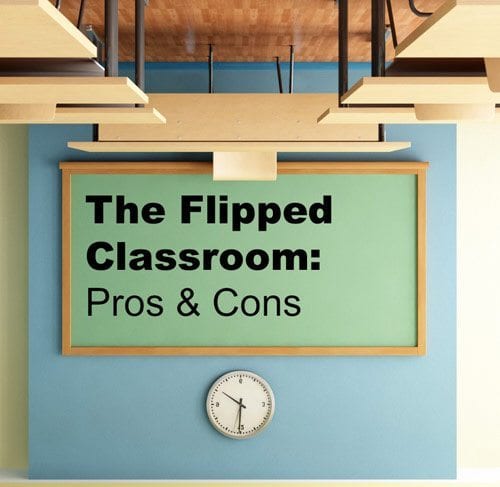
A guest post by Anne Wujcik
You’ve probably heard at least a little bit about flipped learning. Flipping a classroom (or a lesson) typically involves reversing the way instructional time is used, delivering instruction outside of classroom time and moving “homework” into the classroom. Teachers prepare short video lessons (or search out appropriate lessons and other resources on the web) that students watch at home and class time is spent on a variety of activities that allow students to dive deeply into the ideas – interactive labs, collaborative problem-solving sessions, hands-on problem solving activities, one-on-one tutoring sessions and more. Supporters claim that this approach transfers the ownership of learning to the students and makes learning – not teaching – the center of the classroom. Sounds logical, but there are benefits and drawbacks to consider as these two teacher points-of-view make clear!
|
The Upside to Flipping |
The Downside to Flipping |
|---|---|
|
“Creating short podcasts or videos for students to study at home really makes me pare down my traditional lectures and focus on the essentials. I believe I’ve developed better lessons as a result, lessons that help students master the basics and come to class eager to dive in deeper.” |
“I’m sorry—I don’t think lessons should be pared down to a 15 minute video! All nuance is stripped away and the “essentials” may not be presented in a meaningful context. You might be able to do this for selected lessons or topics, but it’s no way to deliver an entire course.” |
|
|
|
|
“My students really appreciate being able to watch my video lectures where and when they want. They can watch as many times as needed, pausing the content to take notes or jot down questions they have and reviewing challenging parts of a lesson, all in private. As a result, they come to class much better prepared to participate in follow-up activities.” |
“Really! It’s a struggle to get my students to complete and hand in even relatively simple homework assignments. The idea that they’re going to spend time watching a video lecture is a stretch. On their own, they will take notes, write down any questions they have and come to class prepared to participate in extension activities. I doubt it.” |
|
|
|
|
“I love working alongside my students to build understanding rather than being the deliverer of knowledge. Labs, class discussions, hands-on activities, students helping one another—all promote deeper understanding. I have time to work one-on-one either helping students dig deeper or clarifying concepts and scaffolding learning for struggling students.” |
“Who says all of us teach by delivering lectures that leave students feeling like spectators? Sure I lecture, but I also use a variety of other classroom-based activities that sound a lot like what goes on in the flipped classroom. Good teaching calls for using a variety of approaches, balancing content delivery and direct instruction with student application and exploration.” |
|
|
|
|
“My flipped classroom is all about differentiation. Students study my library of video lessons and web resources working at their own pace and only move forward when they’ve mastered a concept. The classroom is the place to seek out help, apply concepts to real-life problems and dig deeper.” |
“It’ a big undertaking and the benefits are not clear. I don’t have access to the technology to create good lessons or the monitoring tools necessary to ensure that everyone is on track to mastering the required standards while they pursue this more personalized and self-paced approach.” |
|
|
|
Have you tried flipping some lessons or an entire class? What worked best for you and your students
